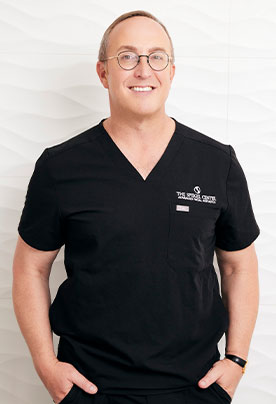
There are many types of facelifts, but all are just variations on a common approach. Here are five things you should familiarize yourself before deciding on your surgeon and booking your consultation for a facelift:
1. The goal of a facelift is to lift the tissues (called the SMAS) underlying the facial skin to a more youthful position. Then, the “extra” or “stretched” skin is tightened or carefully tailored and meticulously sutured around the newly positioned tissues for an improved more youthful appearance. Stitches are hidden in grooves around and behind your ear. Among the many types of facelifts are the SMAS, S-lift, MACS-lift, Extended Deep Plane Facelift, Optimum Mobility Lift, and many others. These all have the same basic principle, lift the tissues under the skin to a youthful position and tighten the skin around those tissues. Facelifts work to reverse gravity pull and position the face the way it was or should have been in your youth.
2. Over the years there have been many studies that show that the number one parameter to getting a good result from your facelift is choosing the right doctor. While patients may become almost obsessed with researching and learning the different types of facelifts, what’s important is choosing the right doctor for you. The bottom line is the name and type of facelift are less significant and less important to the result than the skill of the surgeon. In other words, each surgeon has a facelift style they like, and they’ll get you better results with their style than with another surgeon’s approach. What we are suggesting is that patients do their research about the surgeons, reading reviews and going through many before and after pictures as well as speaking to prior patients before making their decision rather than researching the name of the procedures and approaching doctors that only do one procedure or another. What you want is a doctor that can achieve the results you are seeking no matter what the name of the procedure.
3. When it comes to facelifts most of the discussion is about tightening the skin about the newly positioned tissues. However, sometimes too much tension can be unappealing and may result in what’s referred to as a “pixie” ear. A poorly done facelift by an inexperienced surgeon will result in too much tension on the earlobes, otherwise known as a “pixie earlobe”. If you are unfortunate and have had a facelift elsewhere and experienced this, come visit our very own Dr. Spiegel who has a unique method for fixing this right in the office, and is often busy revising other doctors’ facelifts for a better result.
4. Sometimes a facelift isn’t the answer or is not enough! Those “bad” celebrity facelifts you sometimes see aren’t necessarily bad. Sometimes the doctor just didn’t “finish the job”. A youthful face with a long upper lip looks unnatural, for example. If the actor or actress added a Lip Lift procedure to the facelift, they may have looked great! Another common mistake is leaving behind the buccal fat pads. The key to getting a facelift right is to keep things natural, balanced, and proportional. And only a seasoned facial plastic surgeon will know the techniques and procedures needed to get it right.
5. Facelifts last forever! (In a way, anyway.) While we can help you look 40 when you’re 50, time keeps marching on, so you won’t stay looking 40 forever. You should engage in the discussion of maintenance with your doctor. Discuss with your surgeon how to maintain your results. With energy-based devices like Morpheus8, IPL and lasers, hyaluronic acid and calcium fillers, and botulinum (AKA Botox) we can come close to making those results last forever. The point is you should stay looking younger than you would have had you not gotten your facelift, and you can continue to keep your results with little maintenance routine involving in-office minimally invasive procedures and pharmaceutical-grade facial products.





